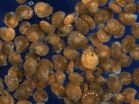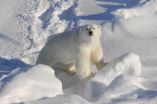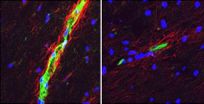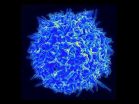(Press-News.org) Determining species diversity makes it possible to estimate the impact of human activity on marine ecosystems accurately. The environmental effects of salmon farming have been assessed, until now, by visually identifying the animals living in the marine sediment samples collected at specific distances from farming sites. A team led by Jan Pawlowski, professor at the Faculty of Science of the University of Geneva (UNIGE), Switzerland, analysed this type of sediment using a technique known as "DNA barcoding" that targets certain micro-organisms. Their research, which has been published in the Molecular Ecology Resources journal, reveals the potential of this new genomic tool for detecting environmental changes as accurately as with traditional methods – but more quickly and at lower cost.
Salmon farming is one of the most widespread activities in marine aquaculture. It has a considerable impact on the environment, which is largely due to three factors: the accumulation of food waste and faecal matter; the toxicity caused by the chemicals employed to clean the cages; and the drugs that are used.
The impact of such farms on the coastal environment is traditionally assessed by monitoring some of the small species that live in the sediments beneath the cages. The visual identification of these animals under a microscope is time consuming and extremely expensive. It also requires highly-trained taxonomy specialists, which renders the method unsuitable for large-scale use. But, as Jan Pawlowski, professor in the Department of Genetics and Evolution at UNIGE, explains: "It is now possible to address this problem using sophisticated tools that analyse the DNA and RNA extracted from sediment samples."
Genetic barcodes…
Working alongside researchers from the Scottish Association of Marine Sciences (UK) and the University of Aarhus (Denmark), Pawlowski collected sediment samples at specific distances from two salmon farms in the heart of the Scottish fjords. "We used genetic barcodes that recognise specific fragments of DNA and RNA extracted from the sediment samples," explains researcher Franck Lejzerowicz, a PhD student in the professor's team: "These 'genetic hooks' consist of DNA sequences that vary between species but remain stable within a given species."
The DNA barcodes used make it possible to identify the different foraminiferal species that are present in the sediments. These single-celled micro-organisms, which have a great diversity, are already recognised environmental bioindicators. As a result, the geneticists were able to process a large number of samples using high-throughput DNA sequencing. "Our study revealed large variations between foraminiferal species collected near farms and those from remote sites. In addition, species diversity diminishes on sites affected by the farms."
… For monitoring the quality of the environment
This type of highly-accurate ecological analysis allowed to establish a correlation between species richness and distance from the cages, a correlation that is even more pronounced if the farm is only stirred by weak sea currents. The same type of correlation was also established based on the degree of oxygenation of the sediments. As Jan Pawlowski states: "The vast amount of organic compounds on the farming sites can even sometimes generate anoxic sediments, which makes it impossible for most species to survive." The biologists were also surprised to discover a new species of foraminifera, which could serve as a bioindicator of organic enrichment.
This technology, known as "metabarcoding", is spreading rapidly, and can be used to supply information on the overall diversity of the micro-organisms found in all samples. The method is suitable for large-scale tests because it is much quicker, more reliable and easier to standardise than the processes that are used at present. This study is one of the first attempts to use environmental genomics as a tool for assessing the impact of industries such as marine aquaculture or offshore drilling.
INFORMATION: END
Using genetics to measure the environmental impact of salmon farming
Researchers at the University of Geneva, Switzerland, demonstrate that DNA bar-coding is a new and efficient tool for the large-scale identification of bioindicator species
2014-05-08
ELSE PRESS RELEASES FROM THIS DATE:
Humans may benefit from new insights into polar bear's adaptation to high-fat diet
2014-05-08
A comparison of the genomes of polar bears and brown bears reveals that the polar bear is a much younger species than previously believed, having diverged from brown bears less than 500,000 years ago.
The analysis also uncovered several genes that may be involved in the polar bears' extreme adaptations to life in the high Arctic. The species lives much of its life on sea ice, where it subsists on a blubber-rich diet of primarily marine mammals.
The genes pinpointed by the study are related to fatty acid metabolism and cardiovascular function, and may explain the bear's ...
Better cognition seen with gene variant carried by 1 in 5
2014-05-08
A scientific team led by the Gladstone Institutes and UC San Francisco has discovered that a common form of a gene already associated with long life also improves learning and memory, a finding that could have implications for treating age-related diseases like Alzheimer's.
The researchers found that people who carry a single copy of the KL-VS variant of the KLOTHO gene perform better on a wide variety of cognitive tests. When the researchers modeled the effects in mice, they found it strengthened the connections between neurons that make learning possible – what is known ...
Penn yeast study identifies novel longevity pathway
2014-05-08
PHILADELPHIA - Ancient philosophers looked to alchemy for clues to life everlasting. Today, researchers look to their yeast. These single-celled microbes have long served as model systems for the puzzle that is the aging process, and in this week's issue of Cell Metabolism, they fill in yet another piece.
The study, led by researchers at the University of Pennsylvania, identifies a new molecular circuit that controls longevity in yeast and more complex organisms and suggests a therapeutic intervention that could mimic the lifespan-enhancing effect of caloric restriction, ...
Study helps explain why MS is more common in women
2014-05-08
A newly identified difference between the brains of women and men with multiple sclerosis (MS) may help explain why so many more women than men get the disease, researchers at Washington University School of Medicine in St. Louis report.
In recent years, the diagnosis of MS has increased more rapidly among women, who get the disorder nearly four times more than men. The reasons are unclear, but the new study is the first to associate a sex difference in the brain with MS.
The findings appear May 8 in The Journal of Clinical Investigation.
Studying mice and people, ...
Immune cells found to fuel colon cancer stem cells
2014-05-08
ANN ARBOR, Mich. — A subset of immune cells directly target colon cancers, rather than the immune system, giving the cells the aggressive properties of cancer stem cells.
So finds a new study that is an international collaboration among researchers from the United States, China and Poland.
"If you want to control cancer stem cells through new therapies, then you need to understand what controls the cancer stem cells," says senior study author Weiping Zou, M.D., Ph.D., Charles B. de Nancrede Professor of surgery, immunology and biology at the University of Michigan Medical ...
What doesn't kill you may make you live longer
2014-05-08
What is the secret to aging more slowly and living longer? Not antioxidants, apparently.
Many people believe that free radicals, the sometimes-toxic molecules produced by our bodies as we process oxygen, are the culprit behind aging. Yet a number of studies in recent years have produced evidence that the opposite may be true.
Now, researchers at McGill University have taken this finding a step further by showing how free radicals promote longevity in an experimental model organism, the roundworm C. elegans. Surprisingly, the team discovered that free radicals – also ...
Population genomics study provides insights into how polar bears adapt to the Arctic
2014-05-08
May 8, 2014, Shenzhen, China – In a paper published in the May 8 issue of the journal Cell as the cover story, researches from BGI, University of California, University of Copenhagen and other institutes presented the first polar bear genome and their new findings about how polar bear successfully adapted to life in the high Arctic environment, and its demographic history throughout the history of its adaptation.
Polar bears are at the top of the food chain, and spend most of their lifetimes on the sea ice largely within the Arctic Circle. They were well known to the ...
How immune cells use steroids
2014-05-08
Hinxton, 8 May 2014 – Researchers at the European Bioinformatics Institute (EMBL-EBI) and the Wellcome Trust Sanger Institute have discovered that some immune cells turn themselves off by producing a steroid. The findings, published in Cell Reports, have implications for the study of cancers, autoimmune diseases and parasitic infections.
If you've ever used a steroid, for example cortisone cream on eczema, you'll have seen first-hand how efficient steroids are at suppressing the immune response. Normally, when your body senses that immune cells have finished their job, ...
Just keep your promises: Going above and beyond does not pay off
2014-05-08
May 8, 2014 - If you are sending Mother's Day flowers to your mom this weekend, chances are you opted for guaranteed delivery: the promise that they will arrive by a certain time. Should the flowers not arrive in time, you will likely feel betrayed by the sender for breaking their promise. But if they arrive earlier, you likely will be no happier than if they arrive on time, according to new research. The new work suggests that we place such a high premium on keeping a promise that exceeding it confers little or no additional benefit.
Whether we make them with a person ...
Universal neuromuscular training an inexpensive, effective way to reduce
2014-05-08
ROSEMENT, Ill.─As participation in high-demand sports such as basketball and soccer has increased over the past decade, so has the number of anterior cruciate ligament (ACL) injuries in teens and young adults. In a study appearing today in the Journal of Bone and Joint Surgery (JBJS) (a research summary was presented at the 2014 Annual Meeting of the American Academy of Orthopaedic Surgeons in March), researchers found that universal neuromuscular training for high school and college-age athletes—which focuses on the optimal way to bend, jump, land and pivot the knee—is ...
LAST 30 PRESS RELEASES:
Numbers in our sights affect how we perceive space
SIMJ announces global collaborative book project in commemoration of its 75th anniversary
Air pollution exposure and birth weight
Obstructive sleep apnea risk and mental health conditions among older adults
How talking slows eye movements behind the wheel
The Ceramic Society of Japan’s Oxoate Ceramics Research Association launches new international book project
Heart-brain connection: international study reveals the role of the vagus nerve in keeping the heart young
Researchers identify Rb1 as a predictive biomarker for a new therapeutic strategy in some breast cancers
Survey reveals ethical gaps slowing AI adoption in pediatric surgery
Stimulant ADHD medications work differently than thought
AI overestimates how smart people are, according to HSE economists
HSE researchers create genome-wide map of quadruplexes
Scientists boost cell "powerhouses" to burn more calories
Automatic label checking: The missing step in making reliable medical AI
Low daily alcohol intake linked to 50% heightened mouth cancer risk in India
American Meteorological Society announces Rick Spinrad as 2026 President-Elect
Biomass-based carbon capture spotlighted in newly released global climate webinar recording
Illuminating invisible nano pollutants: advanced bioimaging tracks the full journey of emerging nanoscale contaminants in living systems
How does age affect recovery from spinal cord injury?
Novel AI tool offers prognosis for patients with head and neck cancer
Fathers’ microplastic exposure tied to their children’s metabolic problems
Research validates laboratory model for studying high-grade serous ovarian cancer
SIR 2026 delivers transformative breakthroughs in minimally invasive medicine to improve patient care
Stem Cell Reports most downloaded papers of 2025 highlight the breadth and impact of stem cell research
Oxford-led study estimates NHS spends around 3% of its primary and secondary care budget on the health impacts of heat and cold in England
A researcher’s long quest leads to a smart composite breakthrough
Urban wild bees act as “microbial sensors” of city health.
New study finds where you live affects recovery after a hip fracture
Forecasting the impact of fully automated vehicle adoption on US road traffic injuries
Alcohol-related hospitalizations from 2016 to 2022
[Press-News.org] Using genetics to measure the environmental impact of salmon farmingResearchers at the University of Geneva, Switzerland, demonstrate that DNA bar-coding is a new and efficient tool for the large-scale identification of bioindicator species




